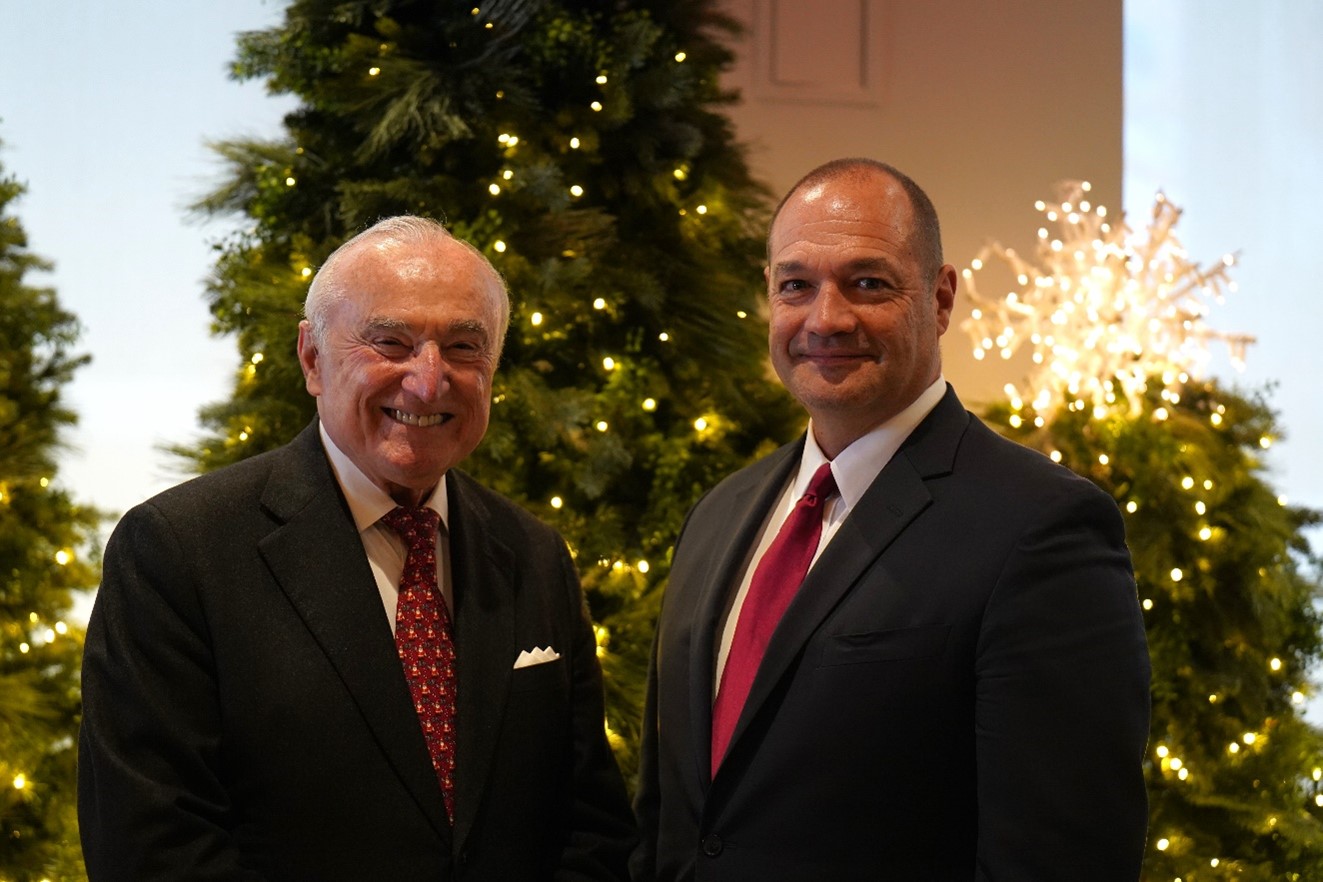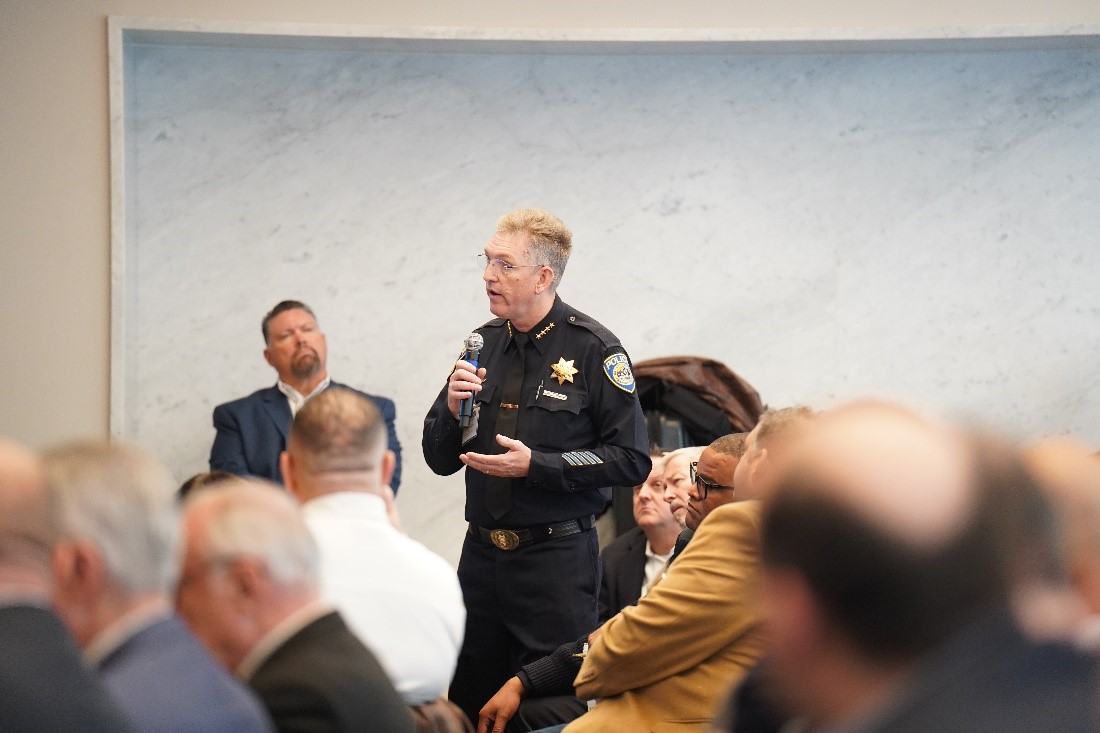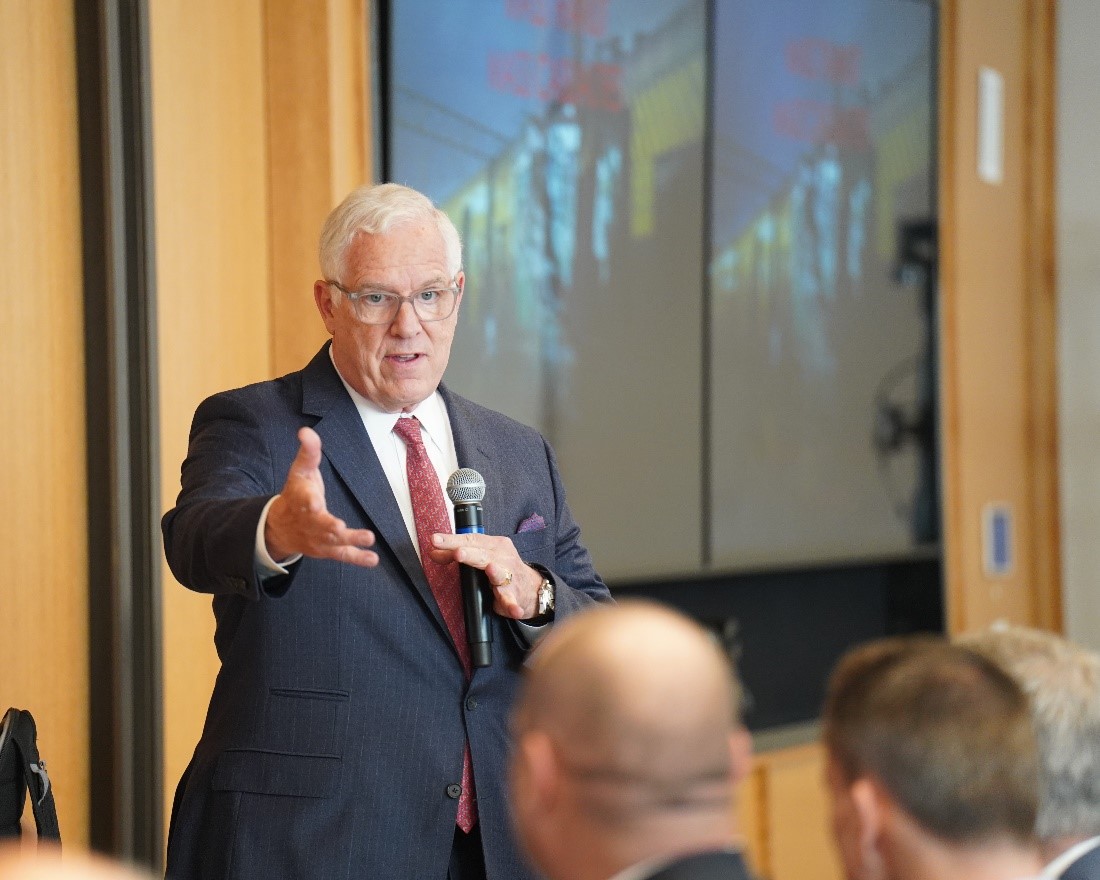|
December 16, 2023 Police problem solving to address violent crime and transit issues
PERF members, I attended two interesting meetings this week: one on reducing violent crime and the other on transit policing issues. While these are very different topics, the meetings shared an important theme: police as problem solvers who engage local stakeholders to implement innovative solutions. Reducing violent crime On Tuesday, I attended the Violent Crime Reduction Summit put on by the DOJ Bureau of Justice Assistance (BJA) in Indianapolis. More than 1,000 people attended, including law enforcement, prosecutors, researchers, community leaders, advocates, and victims. As Attorney General Merrick Garland said in his opening remarks, every person deserves to feel protected, and violent crime undermines safety while destroying people’s trust in government and each other. Attorney General Garland announced the release of the Violent Crime Reduction Roadmap, a repository of resources and information that can help local jurisdictions develop, implement, and evaluate strategies to reduce community gun violence. The Roadmap is organized around ten action items developed by the Council on Criminal Justice. Summit attendees heard from jurisdictions that are implementing some of these strategies to reduce violent crime while building community trust, including Omaha, Knoxville, Milwaukee, and Tucson. With the dedicated commitment of city leaders, these jurisdictions have promoted community involvement in their violence reduction strategies as they’ve focused on the locations and people driving violent crime. Despite limited resources and considerable violent crime challenges, these cities have used those strategies to make their communities safer. As Knoxville Police Chief Paul Noel said, “We need to win with what we have.” Milwaukee Chief Jeffrey Norman said his department “is part of, but not the center of, Milwaukee’s Violence Response Public Health and Safety Team,” and that bringing together all relevant stakeholders, especially community members, has been key to its success. At the summit, BJA announced that it is funding PERF to provide training and technical assistance (TTA) to help agencies implement the Violent Crime Reduction Roadmap strategies to reduce violent crime while building community trust. This work is in PERF’s wheelhouse; in fact, we’ve been providing TTA to agencies across the country for decades, often on the topics outlined in the Roadmap. Shortly after I started at PERF, Minneapolis was facing a major homicide problem. Minneapolis Chief Bob Olson, Minnesota Public Safety Commissioner Don Davis, and the local business community, led by Honeywell, invited PERF to get involved by working with police and community leaders to identify the underlying causes of violent crime. We teamed up probation officers and police officers in the gang unit to identify the likely associates of those who had been murdered. Many of the victims and offenders were juveniles, so probation was a powerful deterrent. By focusing on those associates, police and their partners were able to reduce violence. This TTA will help agencies reduce violence using these types of community-based strategies, tailored to their jurisdiction’s unique needs and drivers of violence. Just as we brought together partners to focus on those committing violent crimes, this TTA will help agencies enact the Roadmap’s ten actions, including identifying the key people and places driving the violence and creating a citywide plan for engaging those individuals and places. I was honored to participate in a panel discussion on our plans for the TTA at the summit.
Speaking on a panel with BJA Associate Deputy Director Cornelia Sigworth; Eddie Bocanegra, Senior Advisor, Office of the Assistant Attorney General; Thomas Abt, Founding Director, Center for the Study and Practice of Violence Reduction; and Shantay Jackson, Violence Reduction Project Manager, National Institute for Criminal Justice Reform To request TTA for your agency, complete this BJA National Training and Technical Assistance Center (NTTAC) TTA request form. A member of the TTA team will follow up with you regarding your request. If you have any questions, you can contact the PERF team working on this project at [email protected]. Transit policing On Thursday, I moderated a full-day forum about transit policing issues in New York City. This meeting was the brainchild of Metropolitan Transportation Authority (MTA) Police Chief John Mueller. “In the 18 months that I’ve had this position, I’ve learned how extremely nuanced transit policing really is,” Chief Mueller said. “We’re dependent on our partners, including other law enforcement agencies, private security, other municipal agencies, and even the National Guard.”
Former New York City Police Commissioner Bill Bratton and MTA Chief John Mueller Source: Officer Andre Bond/MTAPD We had more than 100 attendees from agencies protecting transit systems all over the United States and Canada, and we covered a range of topics, including crime, quality of life issues, counterterrorism, officer health and wellness, training, and relationships with partner agencies. But I think the biggest issue on everyone’s minds was homelessness and mental illness. Agencies from across the country, including the Bay Area Rapid Transit (BART) Police in California, the Amtrak Police, and the MTA Police in New York City, are developing humane and innovative solutions to address homelessness and mental illness-related issues in their transit systems. Many agencies are teaming up with social workers or crisis intervention specialists to help this population.
BART Chief Kevin Franklin Source: Officer Andre Bond/MTAPD “In Washington, we knew partnership would be key, and there are city resources that get someone to a shelter or a meal today but don’t necessarily think about tomorrow and the next day,” said Amtrak Police Chief Sam Dotson, whose outreach program was recently covered by columnist Courtland Milloy in the Washington Post. “Amtrak contracted a social service provider to focus on the population of Washington’s Union Station. The station is comfortable, safe, and has running water, so it’s a magnet. The provider serves as case manager for these individuals. We’ve seen upwards of 60 placements of individuals who were cycling in and out of shelters, and now they have homes.”
Amtrak Police Chief Sam Dotson Source: Officer Andre Bond/MTAPD Senior Director of Security, Risk, and Emergency Management at the American Public Transportation Association Polly Hanson, who previously served as the police chief for Amtrak and the Washington Metropolitan Area Transit Authority (WMATA) Source: Officer Andre Bond/MTAPD The BART Police are employing crisis intervention specialists, and Chief Mueller is training all his officers in ICAT and working to identify those most in need of services. It’s encouraging to see transit police make an effort to provide longer-term solutions to help this population, instead of just telling them to “move along.” Another highlight of the meeting was hearing from former NYPD Commissioner Bill Bratton, who led transit police agencies in Boston and New York City early in his career. He observed that transit policing can be somewhat looked down upon within the profession, but it plays a vital role in moving millions of residents and visitors safely around a city. He said that many of the current challenges are similar to those he faced as a transit police chief, particularly with helping those whom criminologist George Kelling termed the “service resistant.”
Former NYPD Deputy Commissioner and CNN Chief Law Enforcement and Intelligence Analyst John Miller Source: Officer Andre Bond/MTAPD Former NYPD Deputy Commissioner John Miller, who is now CNN’s chief law enforcement and intelligence analyst, and former NYPD Chief of Intelligence and Counterterrorism Tom Galati briefed the group on the threat that terrorism poses to transit systems, particularly in light of the current heightened tensions in the Middle East. They recounted a number of cases in which terrorists targeted transit systems and discussed the role of transit police in preventing and responding to these incidents. Thanks to Chief Mueller for organizing this event, to retired NYPD Chief of Staff Kevin Ward, who secured the space through his current position as head of security for Vornado Realty Trust, and to philanthropist Adam Rose for hosting a reception the evening before the event. Best, Chuck |






